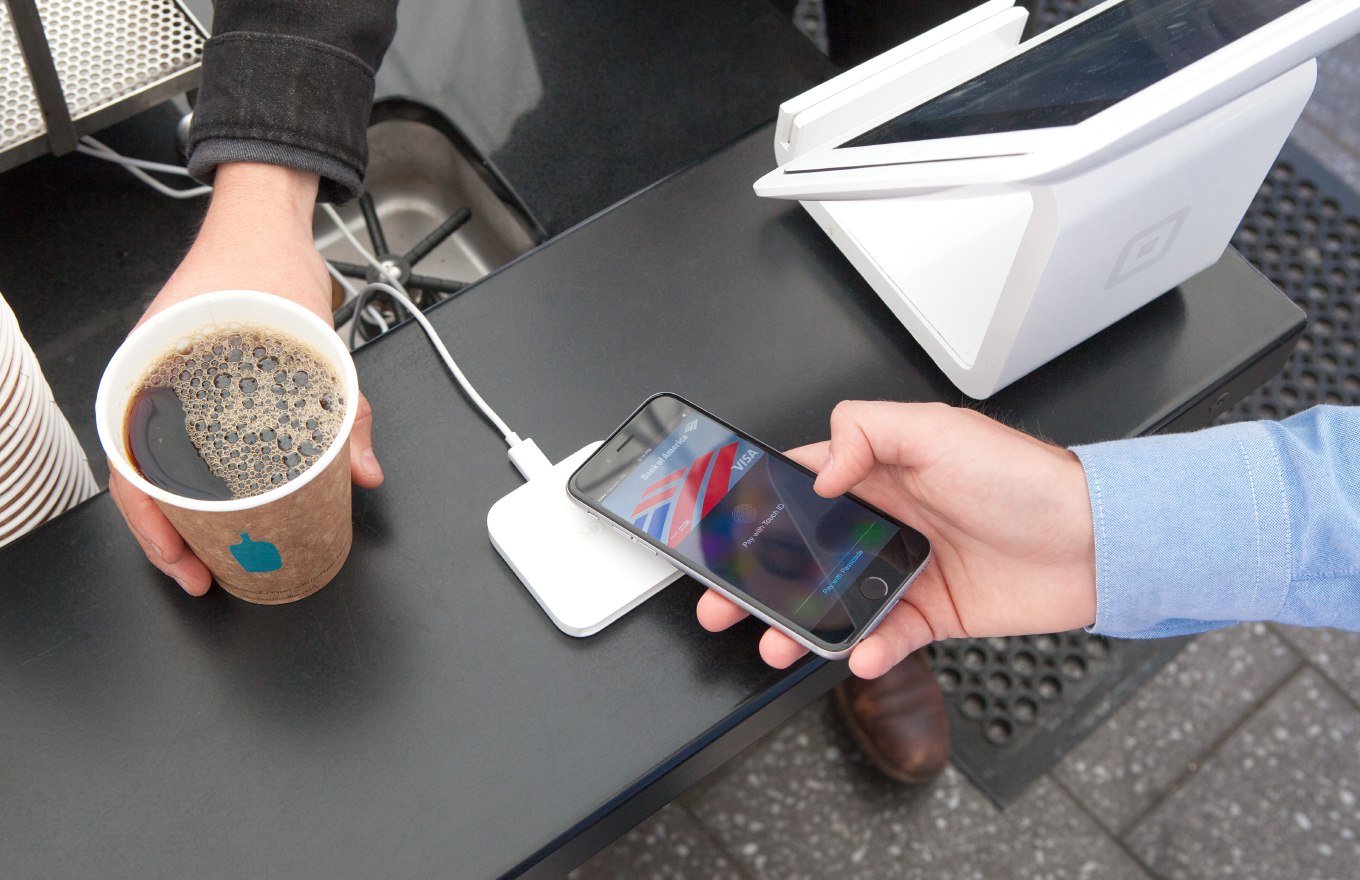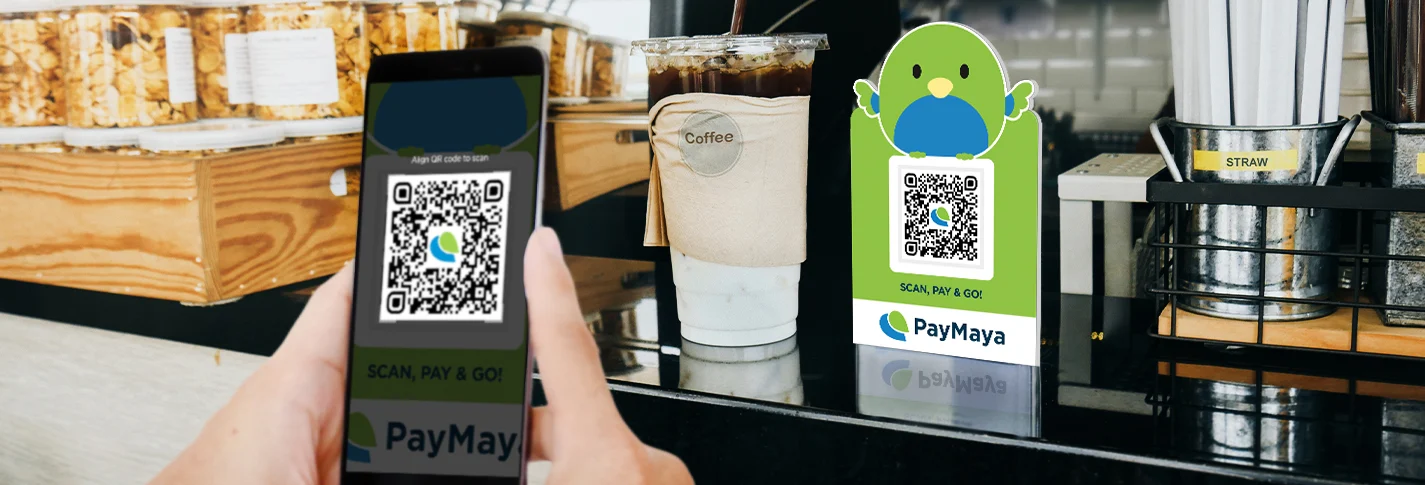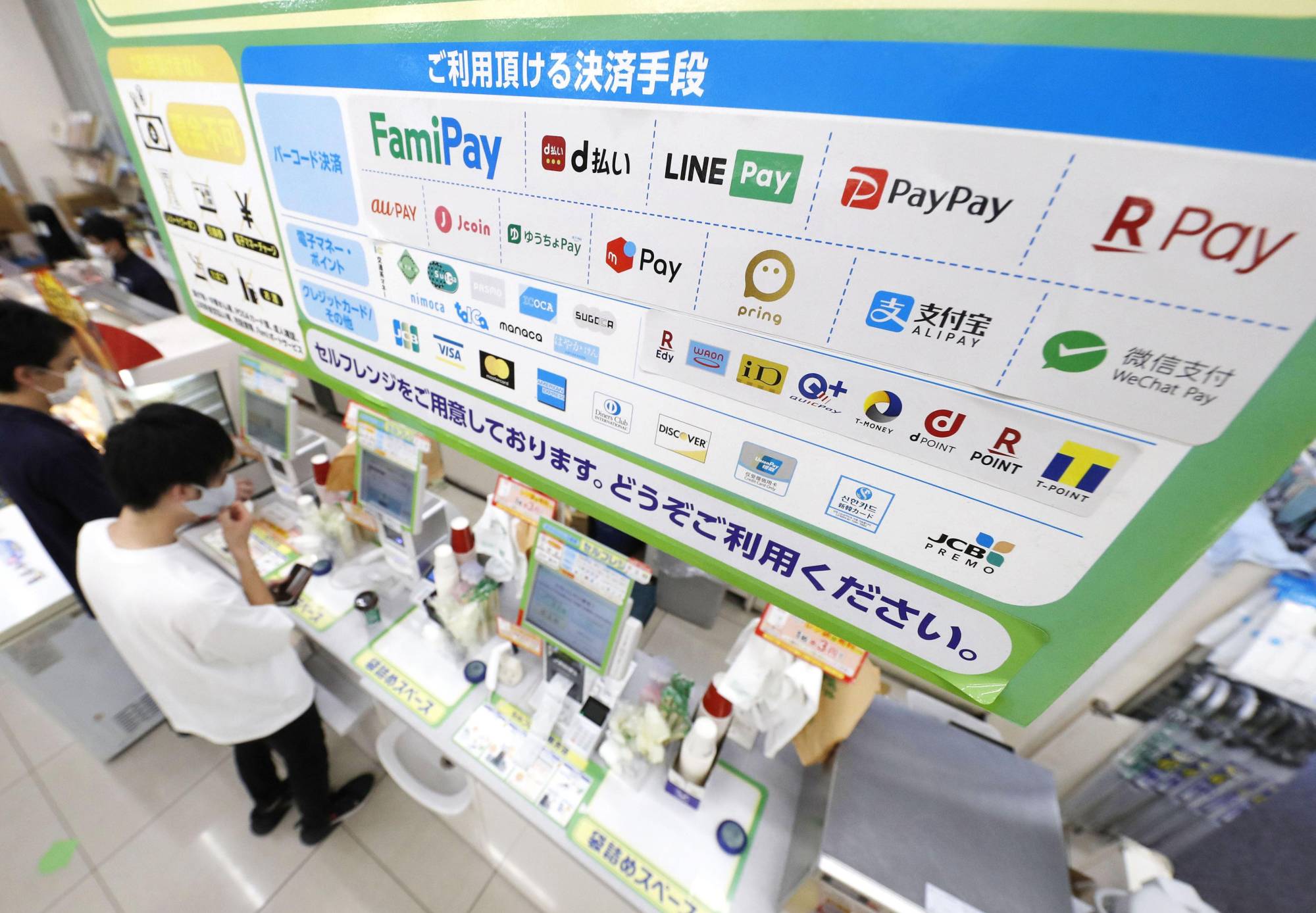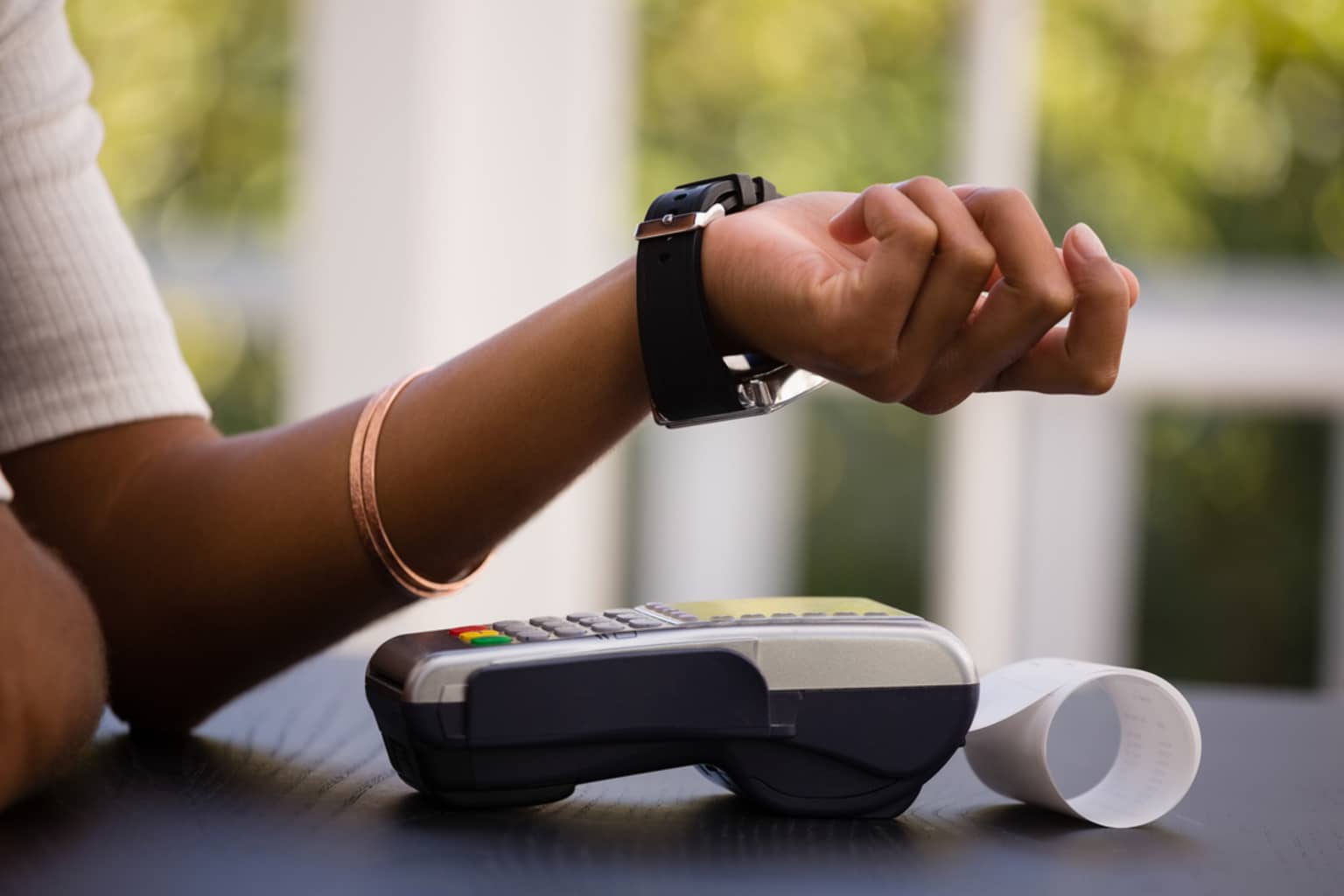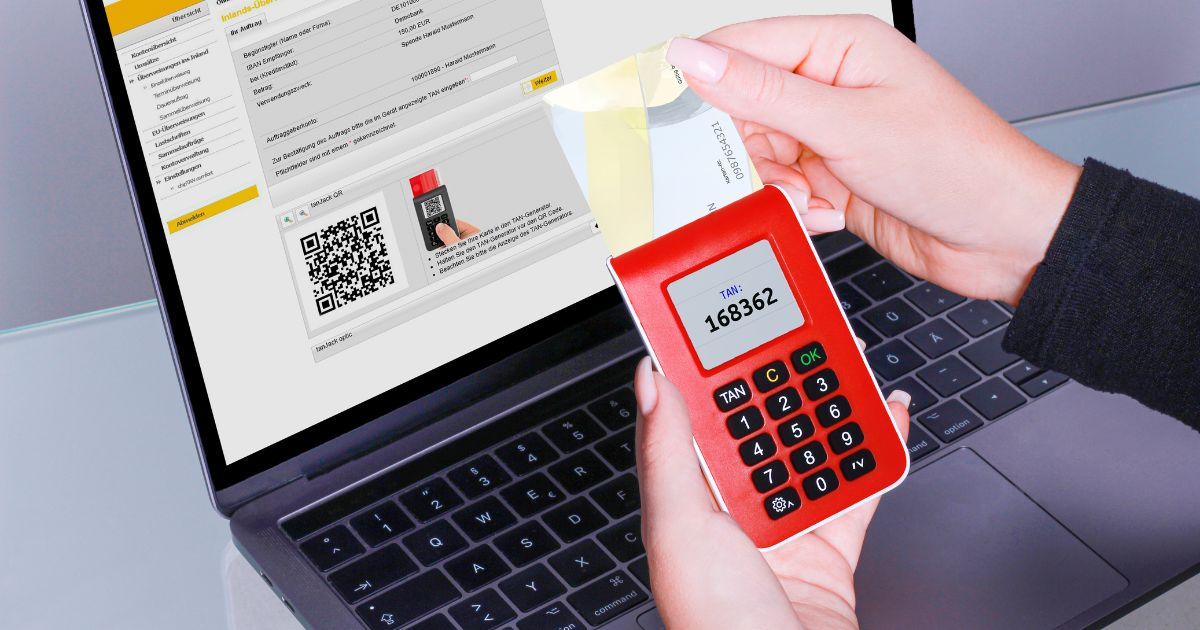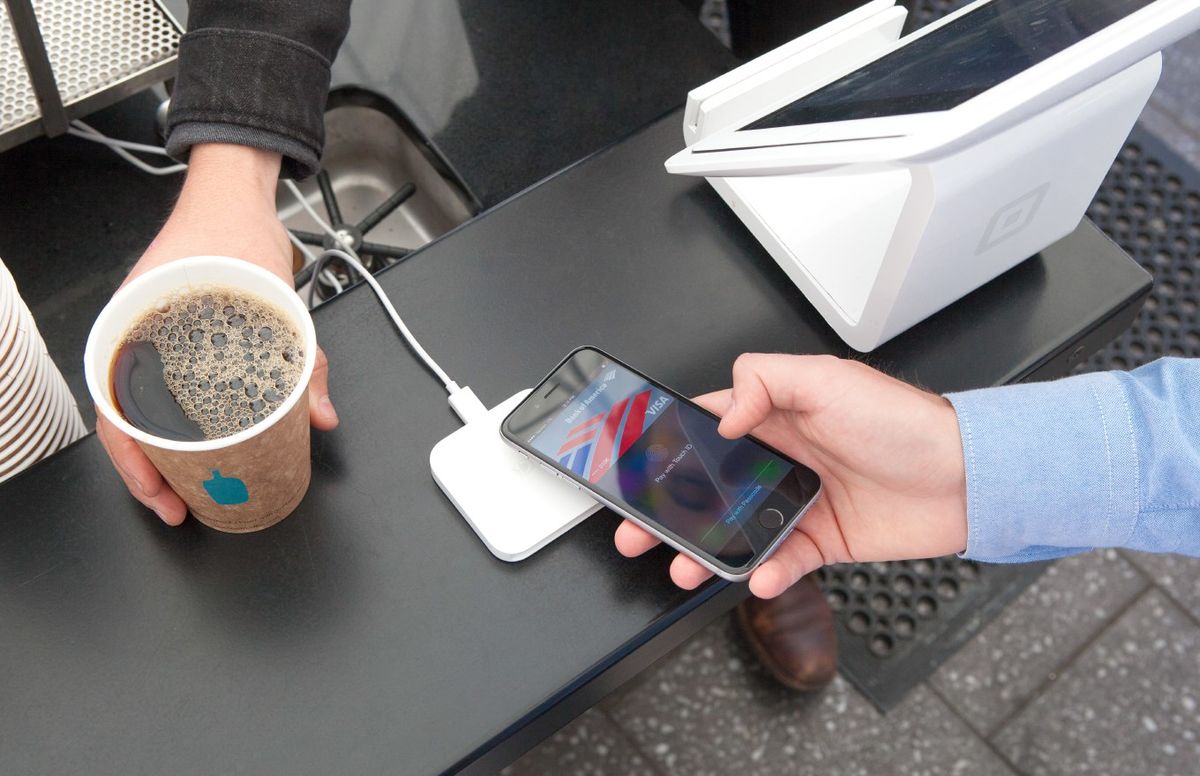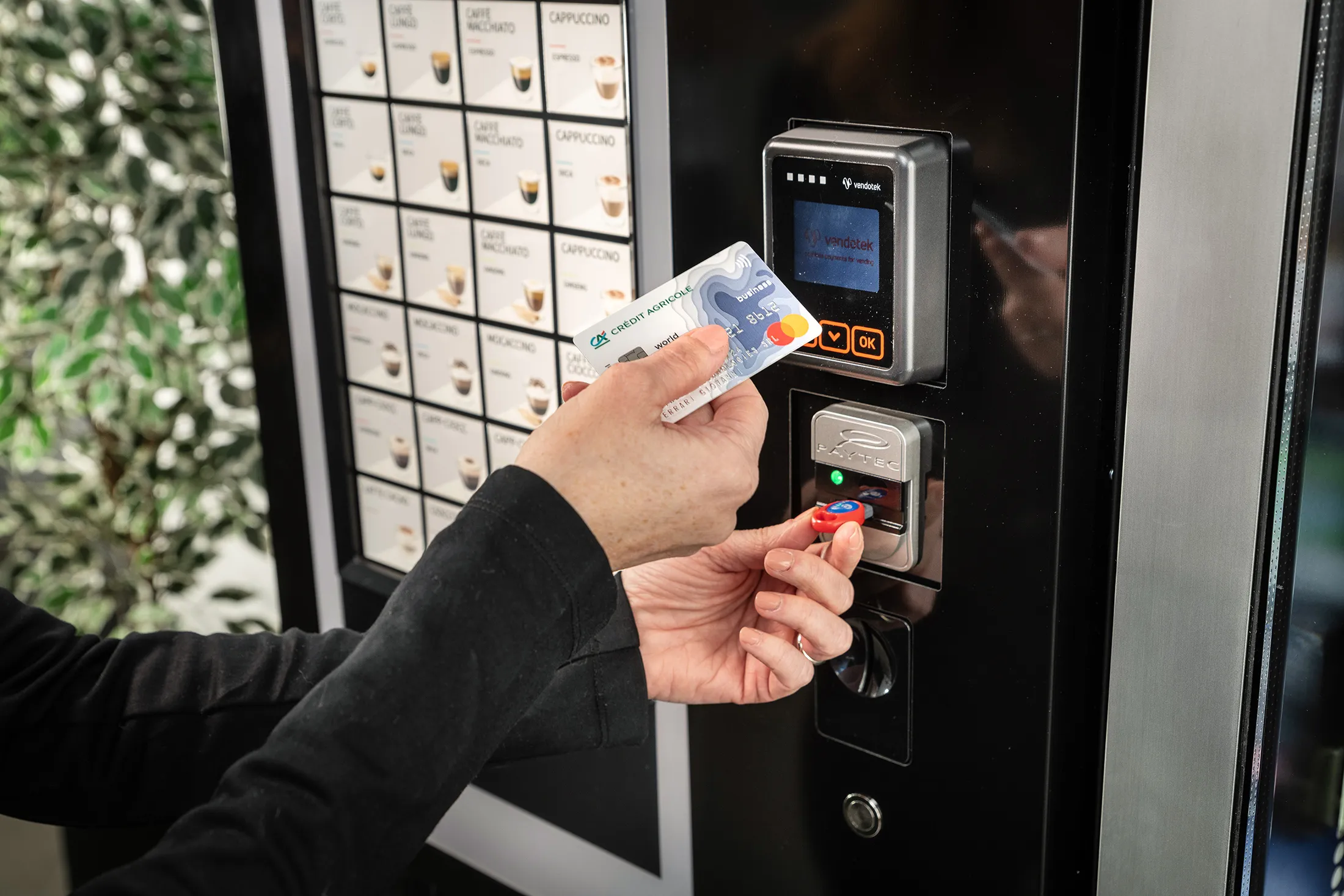Introduction
Welcome to the digital age, where cash is no longer king. The rise of technology has revolutionized the way we make payments, making cashless transactions the new norm. With the increasingly fast-paced and connected world we live in, cashless payment methods offer convenience, security, and efficiency. Whether you’re a business owner or a consumer, embracing cashless payment options is essential for staying ahead in today’s competitive marketplace.
In this article, we will explore the benefits of cashless payment, different types of cashless payment methods, and how you can set up a cashless payment system in your business. We will also discuss strategies for promoting cashless payment to your customers and overcoming any concerns they may have. Additionally, we will explore incentives and rewards that can encourage customers to embrace cashless transactions.
As a business owner, implementing cashless payment solutions not only streamlines your operations but also opens up new opportunities for growth. By leveraging technology and embracing the cashless trend, you can attract more customers, increase customer loyalty, and enhance overall customer experience.
For consumers, cashless payment methods offer convenience like never before. No longer do you need to carry around a bulky wallet full of cash. With a simple tap of your smartphone or card, you can make purchases in-store or online hassle-free. Additionally, cashless payments are more secure, reducing the risk of theft or loss associated with carrying cash.
Whether you run a small local business, an e-commerce store, or a large corporation, integrating cashless payment options is crucial in today’s digital landscape. The benefits are undeniable, and the demand for cashless transactions is only going to increase.
In the following sections, we will delve deeper into the various types of cashless payment methods available and guide you through the process of setting up a cashless payment system. We will also provide you with effective strategies and examples of successful businesses that have embraced and promoted cashless payments. Let’s dive in and explore the exciting world of cashless transactions!
Benefits of Cashless Payment
Cashless payment methods offer a multitude of benefits for both businesses and consumers alike. By eliminating the need for physical cash, these digital transactions provide convenience, security, and efficiency. Here are some key advantages of embracing cashless payment:
- Convenience: With cashless payment methods, gone are the days of fumbling through your purse or wallet for exact change. With a simple tap or swipe, you can make a payment instantaneously, saving valuable time for both the customer and the business.
- Security: Carrying around large sums of cash can put you at risk of theft or loss. Cashless payments reduce this risk by providing secure encryption and authentication methods, ensuring that your financial information remains protected.
- Efficiency: Cash transactions require manual counting, sorting, and depositing. In contrast, cashless payments are processed electronically, automating these tasks and reducing the need for handling and managing physical cash.
- Record-keeping: Cashless payments leave a digital trail, making it easier to track and manage your finances. Whether you’re a business owner looking to reconcile transactions or a consumer keeping a budget, the electronic record-keeping of cashless payments simplifies the process.
- Improved customer experience: Cashless payments offer a seamless and frictionless experience for customers. Whether it’s quick and easy online purchases or contactless transactions in-store, the convenience and speed of cashless payments contribute to a positive overall customer experience.
For businesses, embracing cashless payment methods can unlock numerous advantages:
- Increased sales: By offering cashless payment options, businesses can attract a broader customer base. Many consumers now prefer the convenience and security of digital transactions and may be more inclined to make a purchase if cashless options are available.
- Enhanced customer loyalty: Cashless payment methods can be integrated with loyalty programs, allowing businesses to reward and incentivize repeat customers. This strategy not only encourages customer retention but also fosters brand loyalty.
- Reduced operational costs: Processing and managing physical cash can be time-consuming and costly for businesses. Cashless payments streamline these operations, reducing the need for manual cash handling, counting, and trips to the bank.
- Data-driven insights: Cashless payments generate valuable data that can be analyzed to gain insights into customer behavior, preferences, and spending patterns. This data can inform business strategies, drive personalized marketing campaigns, and improve overall decision-making processes.
The benefits of cashless payment methods are clear, and their adoption is rapidly growing. By embracing these digital transactions, businesses can stay ahead of the competition, cater to customer preferences, and unlock new opportunities for growth. Likewise, consumers can enjoy the convenience, security, and efficiency that cashless payments bring to their everyday lives.
Types of Cashless Payment Methods
The world of cashless payments has blossomed with a variety of innovative options, catering to different preferences and technological capabilities. Here are some of the most popular types of cashless payment methods:
- Contactless Cards: Contactless payment cards, equipped with a near-field communication (NFC) chip, allow users to make payments by simply tapping or waving their card near a payment terminal. This method is quick, convenient, and widely accepted in many retail outlets.
- Mobile Wallets: Mobile payment apps, also known as mobile wallets, have gained tremendous popularity in recent years. Users can link their credit cards or bank accounts to these apps and make payments through their smartphones. Examples of popular mobile wallets include Apple Pay, Google Pay, and Samsung Pay.
- QR Code Payments: QR code payments involve scanning a QR code displayed by the merchant using a smartphone or a dedicated QR code scanner app. The code contains the transaction details, and once scanned, the payment is processed directly from the user’s linked bank account or mobile wallet.
- Online Payments: Online payment gateways, such as PayPal and Stripe, enable secure transactions over the internet. Customers can make purchases on e-commerce platforms by entering their payment details, and the payment is processed electronically.
- Biometric Payments: Biometric payment methods use unique physical characteristics, such as fingerprints or facial recognition, to authorize transactions. This technology provides an extra layer of security and convenience for users.
These are just a few examples of cashless payment methods. The advancements in technology continue to drive innovation, and new methods are constantly emerging. It is essential for businesses to offer a variety of cashless payment options to cater to the diverse preferences of their customers.
When deciding which cashless payment methods to adopt, consider your customer base and the technological infrastructure available to you. Choose the methods that align with your business needs, target audience, and the level of integration required. Offering a seamless and diverse range of cashless payment options will enhance the payment experience for your customers and boost your business’s credibility in the digital marketplace.
Setting Up Cashless Payment System in Your Business
Integrating a cashless payment system into your business is a crucial step in meeting customer expectations and staying competitive in today’s digital landscape. Here are the key steps to follow when setting up a cashless payment system:
- Research and Choose the Right Payment Service Provider: Start by researching reputable payment service providers that offer the cashless payment solutions you require. Consider factors such as transaction fees, security features, customer support, and ease of integration. Select a provider that aligns with your business needs and goals.
- Select Suitable Hardware: Depending on the chosen cashless payment method, you may need specific hardware, such as NFC-enabled payment terminals or QR code scanners. Ensure that the hardware you choose is compatible with the payment service provider and the payment methods you plan to offer.
- Set Up a Merchant Account: Contact your chosen payment service provider to set up a merchant account. This account will enable you to accept cashless payments, process transactions, and manage your finances. Provide all the necessary information and documentation required to complete the account setup process.
- Integrate the Payment System: Once your merchant account is set up, integrate the payment system into your existing point-of-sale (POS) or e-commerce platform. You may need technical assistance or guidance from the payment service provider to ensure a smooth integration process. Test the integration thoroughly to ensure that transactions are processed correctly.
- Train Your Staff: Educate your staff on how to use the cashless payment system. Train them on how to process transactions, handle customer inquiries, and troubleshoot any issues that may arise. Make sure they are well-versed in the various payment methods you offer and can assist customers effectively.
- Communicate the Change to Customers: Inform your customers about the newly introduced cashless payment system. Display signage, update your website and social media channels, and train your staff to educate customers about the benefits and simplicity of cashless payments. Encourage them to make the transition and assure them of the security measures in place.
By following these steps, you can seamlessly set up a cashless payment system in your business. Remember to regularly monitor and evaluate the performance of your cashless payment system. Stay updated with any new features or enhancements offered by your payment service provider to optimize your customers’ experience and stay at the forefront of the cashless payment revolution.
Promoting Cashless Payment to Customers
Transitioning to a cashless payment system is not just about implementation; it’s also about encouraging your customers to embrace the new payment methods. Here are some effective strategies to promote cashless payment to your customers:
- Educate Customers: Provide clear and concise information about the benefits and convenience of cashless payment methods. Highlight how these methods can save time, enhance security, and streamline the payment process. Emphasize the ease of use and the various payment options available to cater to different customer preferences.
- Display Visible Signage: Place eye-catching signage at your storefront and cashier stations. Use visuals that depict cashless payment symbols and encourage customers to “Go Cashless.” This will attract attention and serve as a reminder that cashless payments are accepted and encouraged.
- Create Awareness through Marketing Channels: Leverage your website, social media platforms, and email newsletters to spread the word about your cashless payment options. Use these channels to inform customers about the convenience, security, and rewards associated with cashless transactions. Provide step-by-step guides on how to make cashless payments using different methods to make it easier for customers to adopt the technology.
- Offer Incentives and Discounts: Encourage customers to make cashless payments by offering exclusive discounts or rewards. Run promotions where customers who choose cashless payment methods are eligible for discounts, freebies, or loyalty program points. This incentivizes customers to embrace the change and promotes a positive shopping experience.
- Provide a Seamless and User-Friendly Experience: Ensure that your cashless payment system is intuitive and easy to navigate. Simplify the payment process by minimizing the number of steps required to complete a transaction. This will enhance the overall customer experience and make customers more likely to choose cashless payment options in the future.
- Train and Engage Staff: Educate your staff about the benefits and functionalities of cashless payment methods. Encourage them to proactively promote and suggest cashless payment options to customers. This personal interaction can help build trust and confidence in the new payment methods.
- Collaborate with Other Local Businesses: Collaborate with nearby businesses to collectively promote the adoption of cashless payment methods. This can be done through joint marketing campaigns or cross-promotions, showcasing the convenience and benefits of cashless transactions as a cohesive effort among local businesses.
By implementing these strategies and consistently promoting cashless payment options, you can encourage your customers to embrace the convenience and security of digital transactions. As the adoption of cashless payments continues to grow, positioning your business as a forward-thinking and customer-centric establishment will give you a competitive edge in the digital marketplace.
Overcoming Customer Concerns about Cashless Payment
While cashless payment methods have gained widespread popularity, some customers may still have concerns or reservations about making the transition. Here are some common concerns and effective strategies to address them:
- Security: One of the main concerns customers have regarding cashless payment is the security of their financial information. To alleviate these concerns, emphasize the security measures in place, such as encryption technology and authentication protocols. Highlight the low risk of fraud compared to handling physical cash and reassure customers of your commitment to protecting their data.
- Privacy: Customers may worry about their personal information being shared or accessed by third parties. Clearly communicate your privacy policy and reassure customers that their information is kept confidential. Explain that the personal data collected during cashless transactions is only used for processing payments and improving the overall customer experience.
- Technical Issues: Customers may be concerned about potential technical glitches or system failures when using cashless payment methods. Ensure that your payment systems are reliable and regularly maintained. Train your staff to assist customers in troubleshooting any technical issues that may arise and provide alternative payment options if necessary.
- Lack of Familiarity: Some customers may be hesitant to adopt cashless payment methods simply because they are unfamiliar with the technology. Offer educational materials, such as brochures or online tutorials, to help customers understand the different cashless payment options available and how to use them. Consider hosting workshops or demonstrations to walk customers through the process and build their confidence.
- Limited Acceptance: Customers may worry about the limited acceptance of cashless payments at various establishments. Clearly display logos and signs indicating the accepted payment methods to assure customers that their preferred cashless options are available. Collaborate with other businesses in your area to collectively promote the adoption of cashless payment methods, creating a more widespread acceptance within the community.
- Loss of Control: Some customers may feel that using cashless payment methods takes away a sense of control over their spending. Educate customers about the benefits of tracking and managing their expenses digitally. Highlight the convenience of easily accessing transaction history and statements, which can help with budgeting and financial planning.
By proactively addressing these concerns and providing adequate information and support, you can mitigate customers’ apprehensions about cashless payment. Encourage open communication and feedback from customers to continually improve your payment systems and resolve any issues they may encounter. As customers gain confidence in the security and convenience of cashless payments, their concerns will diminish, and they will be more likely to embrace the digital payment revolution.
Incentives and Rewards for Cashless Payment Users
Encouraging customers to embrace cashless payment methods can be further enhanced by offering incentives and rewards. These incentives not only motivate customers to choose cashless transactions but also foster loyalty and repeat business. Here are some effective strategies for providing incentives and rewards for cashless payment users:
- Discounts and Cashback: Offer exclusive discounts or cashback rewards for customers who choose to make cashless payments. This can be a percentage off their total purchase or a fixed amount returned to their account. Promote these discounts prominently to attract customers and incentivize them to utilize cashless payment options.
- Loyalty Programs: Integrate your cashless payment system with a loyalty program to reward customers for their continued use of digital transactions. Offer points or rewards for each cashless transaction made, which customers can redeem for discounts, free products, or other special perks. This approach not only encourages cashless payment adoption but also enhances customer retention and engagement.
- Free Shipping or Delivery: Offer free shipping or delivery for customers who opt for cashless payment methods. This incentive appeals to online shoppers and encourages them to make purchases without the hassle of handling physical cash or dealing with payment on delivery.
- Exclusive Promotions: Provide exclusive promotions or early access to new products or services for customers who consistently use cashless payment methods. This makes customers feel rewarded for their loyalty and encourages them to continue using digital transactions for future purchases.
- Partnerships with Brands: Forge partnerships with other businesses or brands to offer joint incentives for cashless payment users. This could involve exclusive discounts or rewards when using cashless payments at partner establishments.
- Contests and Giveaways: Hold contests or giveaways specifically for customers who utilize cashless payment methods. This can be done through social media platforms or in-store promotions. Offer attractive prizes to incentivize customers, generating excitement and increasing participation.
When implementing incentives and rewards, it’s important to track and analyze customer data to measure the effectiveness of different strategies. This data will help you tailor your incentives to align with customer preferences and behavior, maximizing their impact.
Remember to effectively communicate and promote these incentives to your customers across multiple channels. Utilize your website, social media platforms, and email newsletters to create awareness and generate enthusiasm about the rewards and benefits of cashless transactions.
By implementing these strategies, you can create strong incentives for customers to choose cashless payments. These rewards not only attract new customers but also motivate existing customers to embrace digital transactions, driving customer loyalty and boosting overall sales.
Marketing Strategies to Promote Cashless Payment
Implementing a cashless payment system is just the first step. To maximize its effectiveness, you need to develop effective marketing strategies to promote cashless payment options to your target audience. Here are some strategies to consider:
- Highlight the Benefits: Clearly communicate the benefits of cashless payment methods in your marketing messages. Emphasize the convenience, security, and efficiency that digital transactions offer compared to traditional cash payments. Show how these benefits align with your customers’ needs and desires.
- Create Engaging Content: Develop informative and engaging content that educates your customers about cashless payments. Utilize blog posts, videos, social media content, and infographics to showcase the simplicity and advantages of using digital payment methods. Provide useful tips and guides to help customers understand and adopt these technologies.
- Offer Limited-Time Promotions: Create a sense of urgency and excitement by offering limited-time promotions or exclusive discounts for customers who choose cashless payment options. This drives immediate action and encourages customers to adopt digital transactions to take advantage of the special offers.
- Utilize Influencer Marketing: Collaborate with influencers or bloggers in your industry who have a strong online presence. Have them showcase their positive experiences with your cashless payment options to their audience, attracting new customers and increasing brand credibility.
- Partner with Local Businesses: Collaborate with other local businesses that have already adopted cashless payment systems. Cross-promote each other’s businesses, highlighting the convenience and benefits of cashless transactions. This collective effort can create awareness and generate interest in the use of digital payment options.
- Provide Testimonials and Case Studies: Share success stories and testimonials from satisfied customers who have benefited from using cashless payment options. Use case studies to demonstrate how implementing cashless payment systems has positively impacted businesses, attracting potential customers who are still hesitant to make the switch.
- Engage with Customer Feedback: Actively encourage customer feedback and engage in conversations about your cashless payment options. Respond promptly to inquiries and address any concerns or issues raised by customers. This demonstrates your commitment to customer satisfaction and builds trust in your cashless payment systems.
- Collaborate with Payment Service Providers: Collaborate closely with your chosen payment service provider to leverage their marketing resources. Take advantage of co-marketing opportunities, joint advertising campaigns, and sharing of customer success stories to promote the benefits of cashless transactions.
- Monitor and Optimize: Continuously monitor the performance of your marketing efforts and analyze the data to refine your strategies. Track customer response rates, conversion rates, and engagement levels to gain valuable insights. Use this information to optimize your marketing campaigns and tailor them to the specific needs and preferences of your target audience.
By utilizing these marketing strategies, you can effectively promote and encourage the adoption of cashless payment methods. Remember, consistency and ongoing promotion are key to ensuring long-term success. Continuously educate and engage your customers to make cashless transactions a seamless and preferred payment option.
Collaborating with Payment Service Providers
Collaborating with payment service providers is crucial when implementing and promoting cashless payment options in your business. These partnerships can offer numerous benefits and ensure a smooth and seamless payment experience for your customers. Here are some key reasons why collaborating with payment service providers is essential:
- Access to Advanced Technology: Payment service providers are at the forefront of the industry, constantly evolving their technology to provide secure, efficient, and innovative payment solutions. By collaborating with them, you gain access to their advanced payment technology, ensuring that your business can offer the latest and most reliable cashless payment options.
- Expert Guidance and Support: Payment service providers have expertise in implementing and managing cashless payment systems. They can offer valuable guidance and technical support throughout the integration process, ensuring that the payment system is seamlessly integrated into your business operations.
- Enhanced Security: Collaborating with payment service providers ensures that your cashless payment system is built with robust security measures in place. These providers have robust security protocols and cutting-edge encryption technologies to protect sensitive customer data from potential threats and cyberattacks.
- Expanded Payment Options: Payment service providers offer a wide range of payment options, allowing your business to cater to diverse customer preferences. Whether it’s contactless card payments, mobile wallets, or QR code payments, collaborating with service providers gives you access to multiple payment methods to meet the needs of your target audience.
- Streamlined Accounting and Reporting: Payment service providers typically provide comprehensive reporting and accounting features. These features streamline the process of tracking transactions, managing settlements, and generating financial reports. By collaborating with service providers, you gain access to these tools, simplifying your financial management processes.
- Partnership Marketing Opportunities: Partnering with payment service providers can open doors to partnership marketing opportunities. Collaborate on joint marketing campaigns, co-branding initiatives, or promotional giveaways that highlight the benefits of their payment services and drive customer acquisition for your business.
- Continuous Innovation: Payment service providers constantly innovate and introduce new features and functionalities to enhance the payment experience. Collaborating with them ensures that your business stays up to date with the latest trends and can offer new, exciting payment options that attract and retain customers.
When choosing a payment service provider, it’s essential to research their reputation, reliability, and compatibility with your business. Consider factors such as transaction fees, customer support, integration capabilities, and their track record in the industry. By selecting the right payment service provider as your partner, you can ensure a seamless cashless payment experience for both you and your customers.
Collaborating with payment service providers is a strategic move that allows you to leverage their expertise, technology, and resources to offer secure, convenient, and diverse cashless payment options. This collaboration strengthens your business’s ability to meet customer demands and enhances the overall payment experience, positioning you for success in the digital marketplace.
Case Studies: Successful Cashless Payment Integration in Businesses
Examining case studies of successful cashless payment integration in various businesses can provide valuable insights and inspiration for implementing cashless payment options in your own organization. Let’s explore a few examples:
- Starbucks: Starbucks, the renowned coffee chain, has successfully integrated cashless payment systems in their stores worldwide. They introduced their mobile payment app, Starbucks Mobile Order & Pay, which allows customers to order and pay for their drinks using their smartphones. This streamlined and convenient payment option not only reduces transaction time but also allows for personalized rewards and promotions, enhancing customer loyalty.
- Amazon Go: Amazon Go, the cashierless store concept, represents a ground-breaking example of cashless payment integration. Customers use the Amazon Go app to enter the store, and sensors and artificial intelligence track their selected items. The app automatically charges their Amazon account as they exit the store. This cashless and frictionless payment experience has revolutionized retail, offering a seamless and convenient shopping experience.
- Uber: Uber has transformed the way we pay for transportation services. By allowing customers to link their credit cards or digital wallets to their Uber accounts, they have eliminated the need for physical cash transactions. Riders simply get in and out of the car, and the payment is automatically deducted. This cashless model promotes convenience, safety, and efficiency for both passengers and drivers.
- Walmart: Walmart, one of the world’s largest retailers, has successfully integrated various cashless payment options across its stores. They accept all major digital wallets, including Apple Pay and Google Pay, and offer their own payment app, Walmart Pay. This allows customers to pay using their smartphones, streamlining the checkout process and providing added convenience for shoppers.
- ParkMobile: ParkMobile is a mobile app that enables users to pay for parking through their smartphones. Instead of searching for coins or going to a parking meter, users can simply enter their parking zone number and pay electronically. This cashless payment system has transformed the parking experience, making it more convenient and eliminating the need for physical cash.
These case studies demonstrate how businesses of different sizes and industries have successfully integrated cashless payment options to improve customer experiences and drive growth. By leveraging the convenience, security, and efficiency of cashless transactions, these organizations have not only streamlined their operations but also enhanced customer loyalty and satisfaction.
When implementing cashless payment systems in your own business, examine these successful case studies and adapt their strategies to suit your unique needs and goals. Consider the specific demands of your industry and target audience to create a seamless and tailored cashless payment experience for your customers.
Remember, successful cashless payment integration requires a strong alignment between technology, customer preferences, and business objectives. By learning from these case studies and leveraging best practices, you can navigate the cashless payment landscape with confidence and drive your business’s success in the digital era.
Conclusion
In today’s digital age, cashless payment methods have become increasingly prevalent, offering convenience, security, and efficiency for both businesses and consumers. Embracing cashless payment options is no longer just an option; it’s essential for businesses to stay competitive and meet the evolving demands of modern customers.
Throughout this article, we have explored various aspects of cashless payments, from the benefits they offer to the different types of cashless payment methods available. We have discussed setting up a cashless payment system in your business, promoting these options to customers, and addressing any concerns they may have.
We have also delved into the importance of providing incentives and rewards for cashless payment users, as well as implementing effective marketing strategies to promote these payment options. Additionally, we have highlighted the significance of collaborating with payment service providers and provided real-life case studies showcasing successful cashless payment integration in businesses.
As technology continues to advance and shape the way we conduct transactions, the adoption of cashless payment methods is only going to increase. Businesses that embrace this digital transformation can reap numerous benefits, such as increased sales, improved customer experience, and reduced operational costs.
It is important for businesses to continuously innovate, adapt, and educate their customers about the advantages of cashless payment options. By staying up to date with the latest trends, partnering with payment service providers, and providing seamless and secure payment experiences, businesses can thrive in the ever-changing digital marketplace.
So, whether you run a small local store, an online business, or a large corporation, it’s time to take the leap into the world of cashless payments. Embrace the convenience, security, and efficiency of digital transactions, and position your business for success in the modern landscape.







